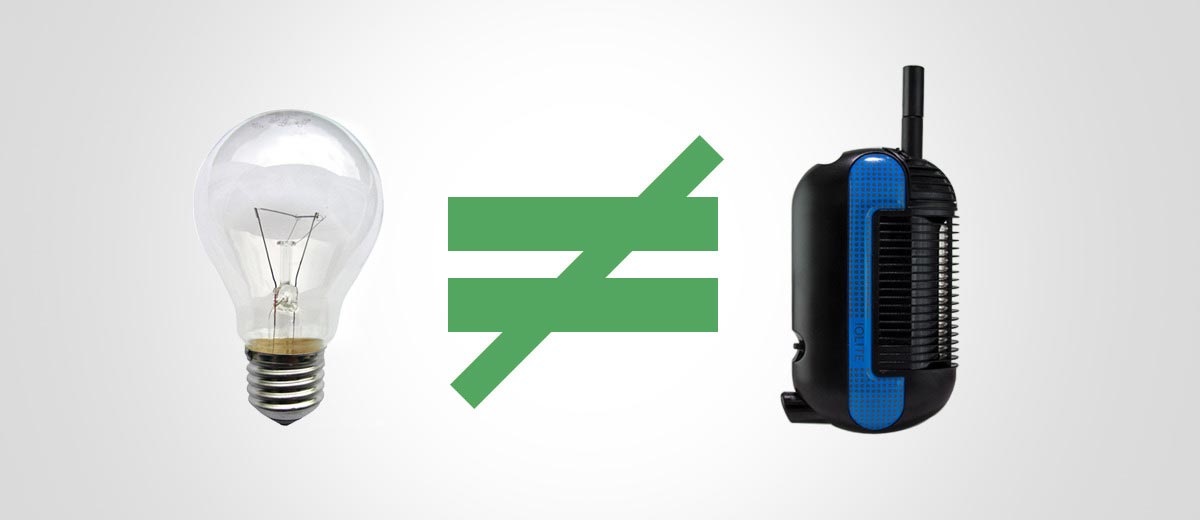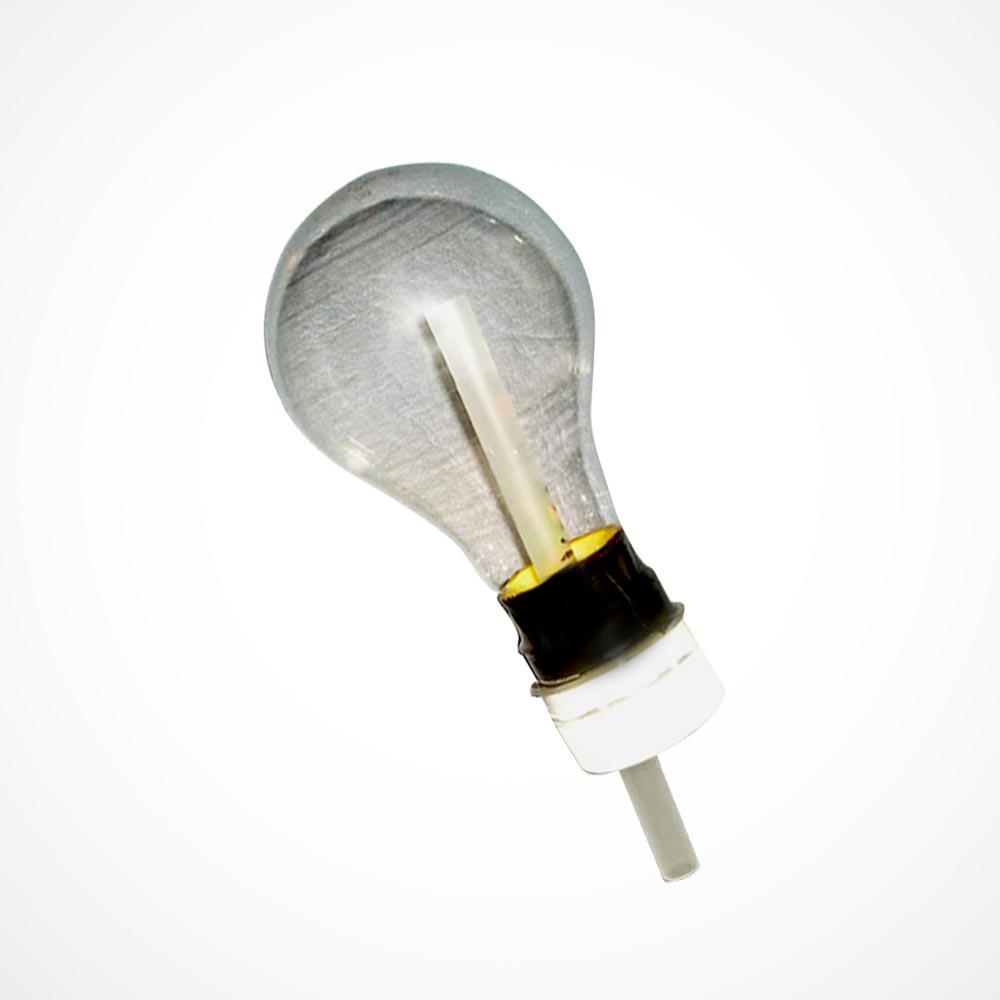Lightbulb Vaporizer – What You Need To Know

What is a Lightbulb Vapourizer?
To keep this nice and basic, the lightbulb vapourizer is a way to heat your herbs without letting it make direct contact with a flame. This lets you heat up the herbs and vapourize the compounds so you can inhale it. Theoretically speaking, of course. Let’s break down the construction of the lightbulb vapourizer so we can tell you why this is a bad idea, step by wonderful step.
Step 1)
Using a towel to hold the bulb in case it breaks while you’re building it, use a very sharp knife to pry the bottom metal piece away from the light bulb.
- Let’s start with the possible breaking bulb. Do you enjoy getting stabbed in the hand by sharp glass? I should think not. A towel will be a poor barrier against that sort of thing as jagged glass can be sharp as hell, so your safety already isn’t guaranteed.
- Next up is the super sharp knife. If you aren’t like me, you won’t be worried about dulling one of your good knives. If you are, why the hell are you dulling one of your good knives? Regardless, working with super sharp knives in this way doesn’t fit particularly well with just about anybody’s safety standards and you could get badly hurt with one wrong move.
Step 2)
With a twist and a push of your knife through the hole created by the removed metal piece on the bottom of the bulb, crack the ceramic away from the metal base of the bulb. This may require a good amount of force
- Yay! More delicate handiwork done with the super sharp knife! See above for my thoughts on that, then double it in light of the whole extra force note at the end of that step. I like knives stabbing my hand as much as I like glass stabbing my hand.
Step 3)
Once you’ve broken and removed the ceramic at the base of the bulb, use the same technique with the knife to break the glass in the hole and remove the filament.
- Apparently you can use a screwdriver for this part, but regardless the idea hasn’t really gotten any better and it’s still pretty easy to mess it up and end up with your hand looking like it did a few second in a blender.
Step 4)
Clean the inside of the light bulb. Some people suggest using salt or sugar if you happen to have a frosted light bulb. Once done, throw out the salt/sugar and wash the bulb with hot water and soap inside and out.
- Here’s where things get really sketchy. The frosting inside the light bulb is usually silica. Have you ever vaped silica? If you’re alive and breathing normally, the answer is probably no, and if you want to keep your lungs functioning properly, you’re likely going to want to continue not inhaling silica. The point is that the inside of a light bulb isn’t pure and clean and you likely don’t have the means to properly and completely clean it to a point where you’re guaranteed to be safe.
Step 5)
Use a plastic bottle cap that fits to the base of the light bulb. Drill a small hole off to the side of the cap, and another hole only big enough to fit your tube in the middle. Make sure the hole is the perfect fit for your tube.
- And now we’re using plastic in the vapourizer? I think you all know how we here at tvape.com feel about plastic in vapourizers. If you don’t, spoiler alert: it’s horrible.
Step 6)
Make sure the bulb is bone-dry both inside and out. Put your tube through the hole of your cap, then tape the bottom of the light bulb so that the cape makes a tight seal with the bulb.
- Tape is yet another material we frown upon as building materials for a vapourizer, though no manufacturer has dared try to use it in their unit.
Step 7)
Load it with herbs, put your cap on, and use it by lighting the underside of the bulb with a candle or lighter where your herbs is until you see vapour and inhale.
- Oh lord, no.
Lightbulb Vapourizer: Breakdown
There are a few things here that make this a bad vapourizer, and we aim to tackle them all almost like we would a review. Technically, this is a “portable vapourizer”, so we’ll use those evaluation criteria.
Build Quality
Seriously? It’s made of a light bulb, tape, a bottle cap, and a straw or tube. The quality of the materials couldn’t be lower quality if you tried without making a vapour-based death machine.
Vapour Quality
Not only do you not really have temperature flexibility, but most of your vapour pathway is plastic and you’re vaping it on the inside of a light bulb. It’s potentially very dangerous and the vapour can’t even cool before it gets to you so it will likely be pretty hot and harsh. Also, there’s no screen so have fun inhaling herbs.
Look and Feel
It looks like it was built by a hobo.
Portability
You could’t pay me enough to carry a light bulb like this in my pocket, even if it did fit. You’re one wrong move away from having a pocket full of razor blades.
Discreetness
It’s big, so it will stand out and nobody on the planet would think that vapourizing out of a light bulb looks normal…or cool.
So there you have it! This is a horrible and dangerous idea that yields a sub-par vapourizer to say the least. The price of a proper, quality vapourizer might seem high, but this is an investment you’re making. It’s an investment in your herbs which will last SO much longer, and an investment in your health. Don’t cheap out on yourself. If you’re looking for something relatively easier and MUCH safer to use, feel free to check out the Arizer Air ii vaporizer.
Thanks for reading our Lightbulb Vapourizer – What You Need to Know blog post! Reminder! Don’t forget to leave a leave a comment!









